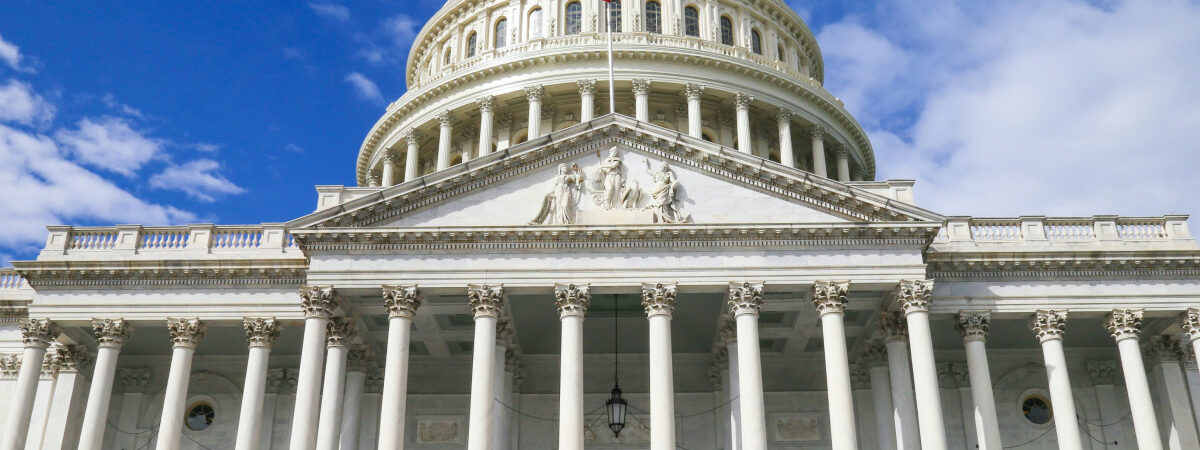
“One Big Beautiful Bill”: What H.R. 1 Means for Clean Energy and Tax Reform
On July 4, 2025, following weeks of legislative negotiations, President Donald Trump signed into law H.R. 1, officially titled the “One Big Beautiful Bill Act.” This comprehensive budget reconciliation bill encompasses a wide array of federal policy changes, including substantial tax reforms, modifications to healthcare and immigration policies, and adjustments to energy programs.
H.R. 1 includes significant changes to federal support for renewable energy, electric vehicles (EV), and energy efficiency projects. More specifically, the bill includes changes that modify, or repeal provisions established under the Inflation Reduction Act (IRA), which expanded access to tax credits aimed at reducing the cost of clean energy and decarbonization. For organizations relying on IRA incentives to move forward with solar, EV, or energy efficiency projects, this bill will require reshaping of project timelines and budgets.
CALL TO ACTION: PowerOptions Members considering solar, EV, or energy efficiency projects are encouraged to connect with their Member Manager to align project timelines before incentive end dates and maximize available financial benefits.
Key Changes to IRA Tax Credits: Clean Energy Tax Credits
H.R.1 repeals Sections 45Y (Clean Electricity Production Tax Credit) and 48E (Clean Electricity Investment Tax Credit) of the Inflation Reduction Act (IRA) as they apply to wind and solar energy projects. These sections currently provide up to a 30% tax credit for qualifying clean energy projects. Under H.R.1, wind and solar projects will no longer be eligible for these credits unless they meet the following specific provisions:
- Be placed in service by December 31, 2027, or
- Have begun construction by July 4, 2026 (within one year of H.R.1’s enactment) and be placed in service within four years.
Credits under Sections 45Y and 48E remain available for other eligible technologies, including geothermal, standalone energy storage, and clean hydrogen, through 2032 as originally authorized in the IRA.
IMPACT: PowerOptions’ Members who are considering solar projects are advised to act with urgency to benefit from federal tax credits.
Credit Transferability and Foreign Entity Restrictions
H.R.1 preserves the Inflation Reduction Act’s provision that allows clean energy tax credits to be transferred, meaning project developers can sell their credits to unrelated buyers, providing more flexibility to finance projects that might not have enough tax liability on their own.
However, H.R.1 introduces stricter rules to limit the role of specific foreign entities in U.S. clean energy projects. Tax credits cannot be transferred to entities with ties to certain foreign governments, and projects that begin construction after December 31, 2025, may be disqualified if they include any foreign components, designs, or financing from prohibited countries.
IMPACT: PowerOptions is working with our Program Suppliers to ensure that projects will not be at-risk for disqualification of tax credits.
EV Tax Credits
Under H.R.1, the federal tax credits for electric vehicles (EVs) will be eliminated for vehicles acquired after September 30, 2025.
The bill also repeals Section 30C, which currently provides a tax credit for EV charging infrastructure. This credit will no longer be available for charging equipment placed in service after June 30, 2026.
IMPACT: PowerOptions’ Members pursuing EV fleet upgrades should consider significantly accelerating their timeline and prioritizing upgrades within the Summer of 2025.
Commercial Building Efficiency Deduction
H.R.1 repeals changes made by the Inflation Reduction Act to Section 179D, which currently allows non-profit and tax-exempt entities to allocate energy efficiency tax deductions to architects, engineers, and other project designers. This provision has helped reduce costs for energy-efficient new construction and building upgrades in schools, hospitals, and other public-serving facilities.
Under H.R.1, the 179D deduction will no longer be available for properties that begin construction after June 30, 2026, limiting future support for high-performance building design in the nonprofit and public sectors.
IMPACT: PowerOptions’ Members pursuing eligible energy efficiency upgrades should consider significantly accelerating their timeline and prioritizing upgrades to start construction before the deadline.
Navigating Changes
The passage of H.R. 1 marks a turning point for both immediate and long-term clean energy initiatives. Despite uncertainty at the federal level, state clean energy mandates remain in effect and continue to drive progress toward affordable, clean energy in Massachusetts, Rhode Island, and Connecticut.
We encourage PowerOptions’ Members to stay engaged with our team on their clean energy projects. Whether navigating funding uncertainties, adjusting project priorities, or coordinating with program suppliers, PowerOptions is here to support you every step of the way.
PowerOptions is closely monitoring the implementation of this bill and will continue to keep our Members informed through our Regulatory and Policy Summaries (RAPS) Reports, direct Member outreach, and personalized support.
Together, we will navigate change and continue to advance clean energy solutions in this shifting policy landscape.


